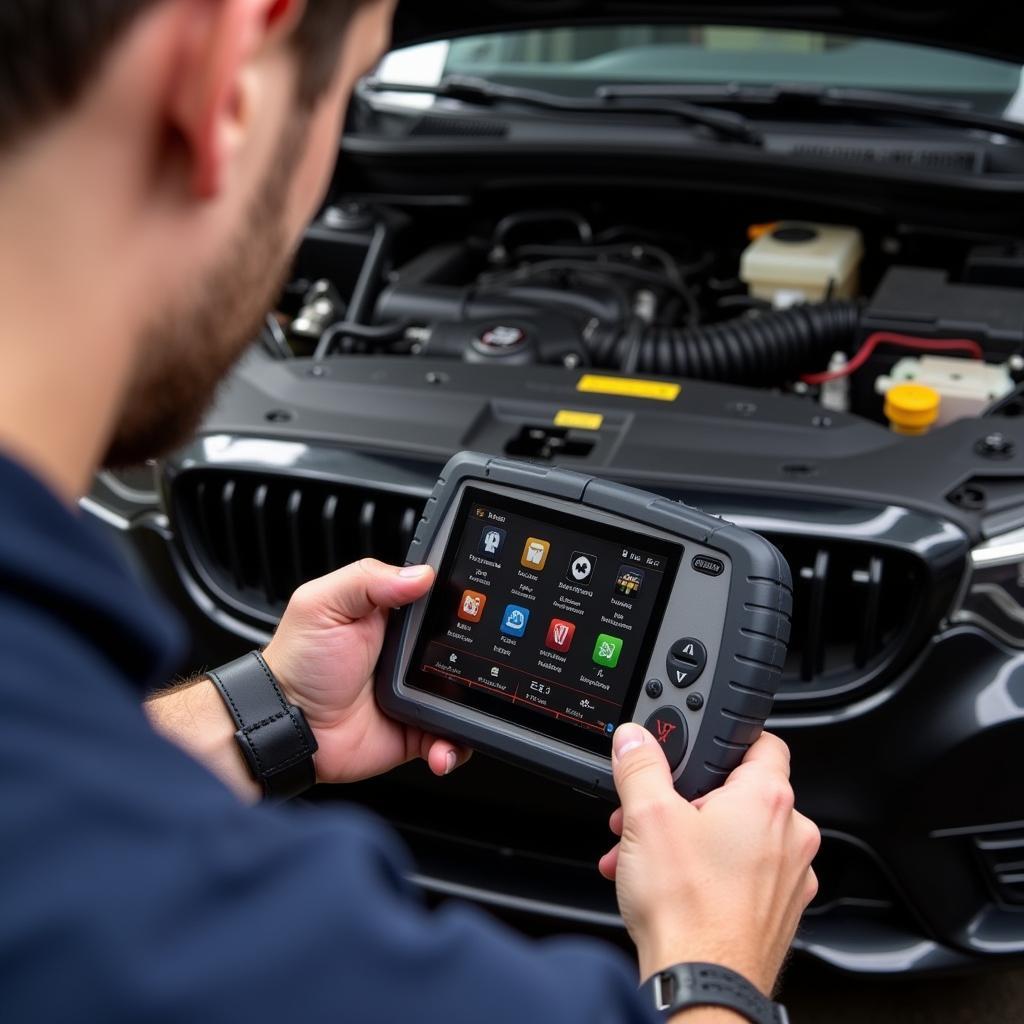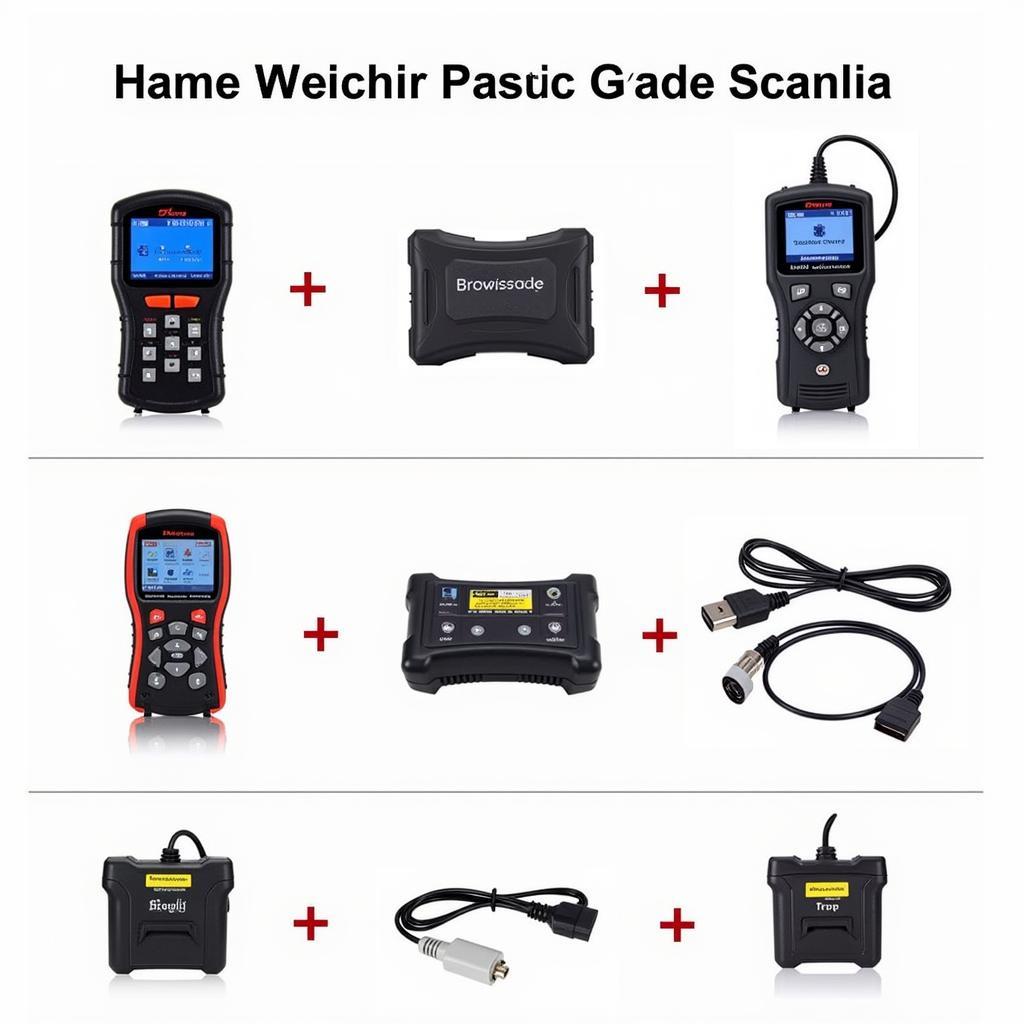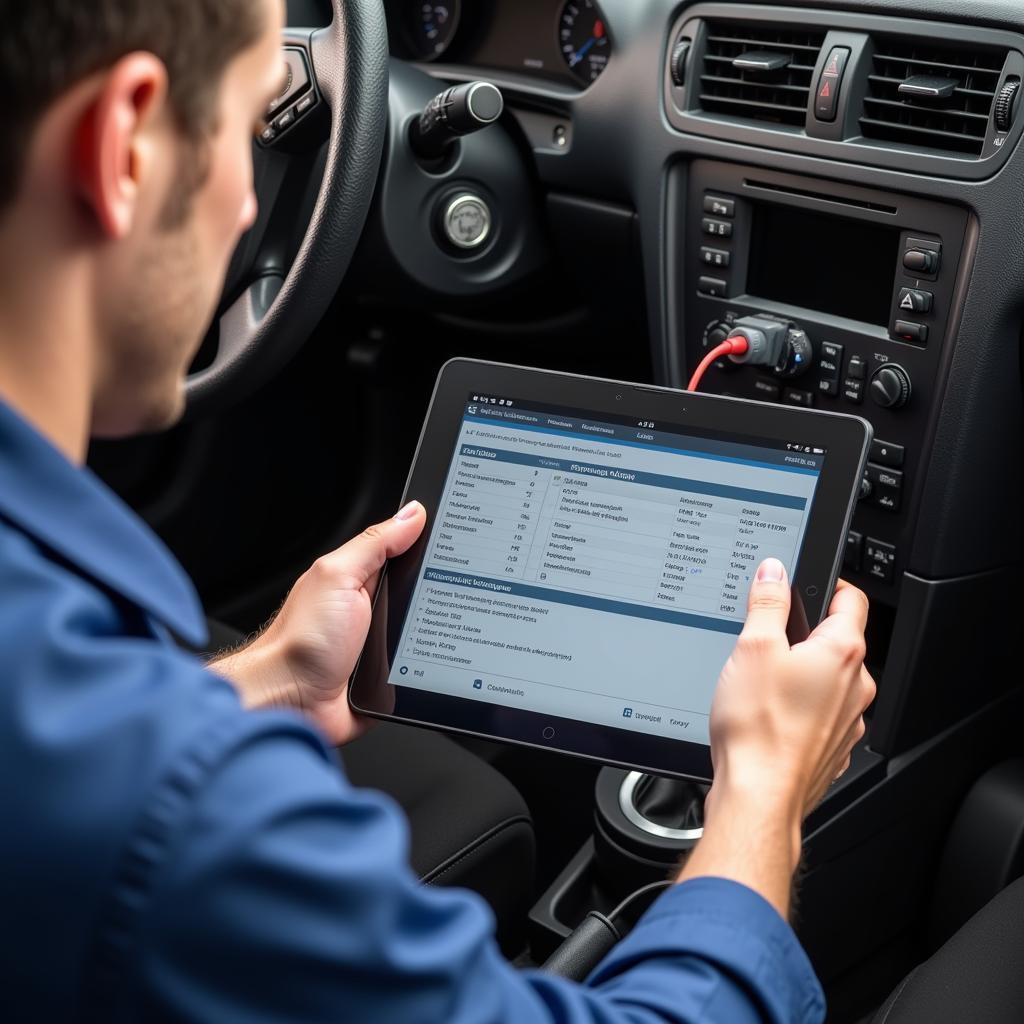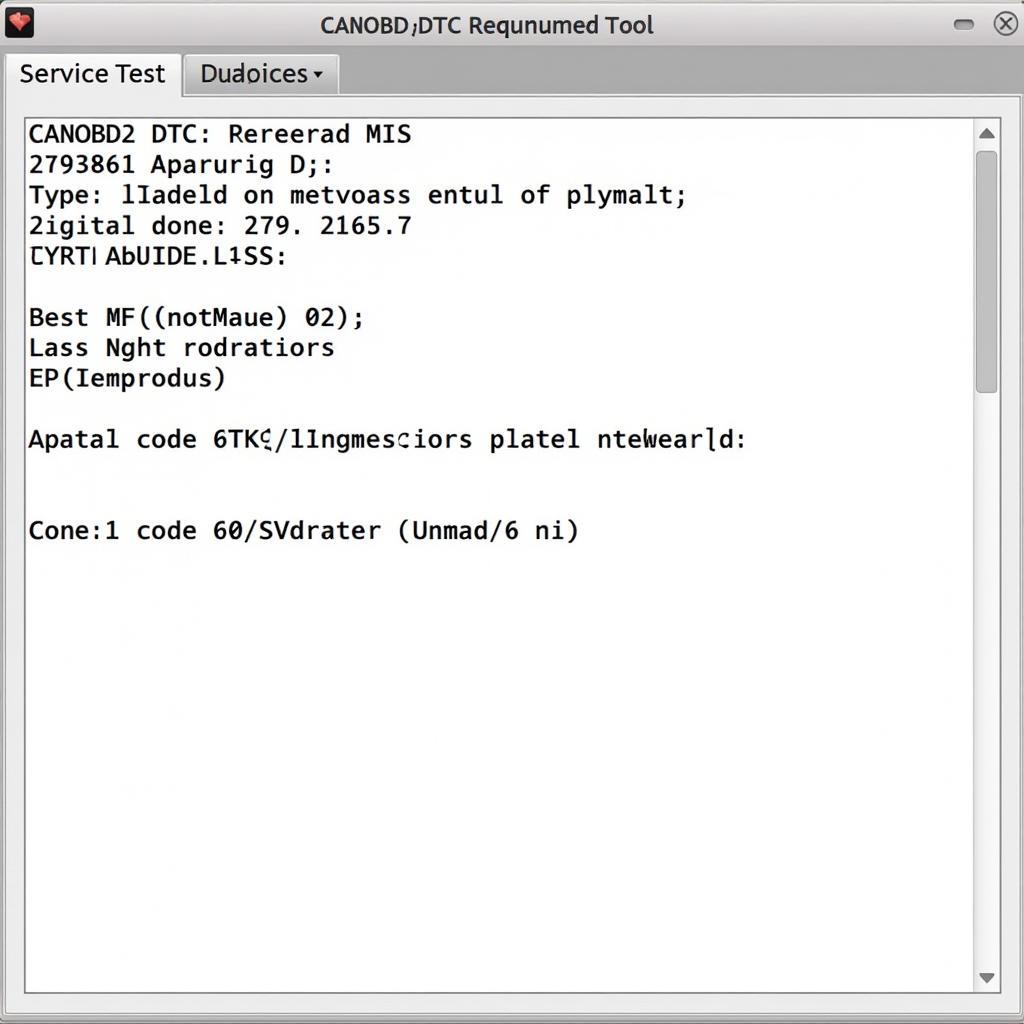The world of automotive repair has evolved significantly. Gone are the days of relying solely on a mechanic’s intuition and experience to pinpoint car problems. Today, “automotive diagnostic test tools” are indispensable, providing a technological window into the complex systems of modern vehicles. Whether you’re a seasoned mechanic or a car enthusiast, understanding these tools can be a game-changer for diagnosing and repairing vehicles efficiently.
Why Automotive Diagnostic Test Tools Matter
Cars are no longer just mechanical marvels; they’re sophisticated networks of computers, sensors, and actuators. When something goes wrong, pinpointing the root cause requires more than just a hunch. This is where Automotive Diagnostic Test Tools come in, acting as a direct line of communication with your car’s computer system, often referred to as the Engine Control Unit (ECU).
These tools offer several key advantages:
- Accurate Diagnosis: They retrieve diagnostic trouble codes (DTCs) directly from the ECU, providing specific insights into the nature of the problem.
- Time Savings: Instead of spending hours on visual inspections and manual tests, these tools expedite the diagnostic process.
- Data Insights: Beyond DTCs, they grant access to real-time data streams from various sensors, allowing you to monitor engine performance, emissions, and more.
- Cost-Effectiveness: Early and accurate diagnosis can prevent unnecessary repairs and costly replacements down the line.
 Mechanic using a diagnostic tool
Mechanic using a diagnostic tool
Types of Automotive Diagnostic Test Tools
The market offers a wide array of diagnostic tools, each with varying capabilities and price points. Let’s break down the common types:
1. Code Readers: As the name suggests, code readers are entry-level tools primarily designed to read and clear DTCs. They are affordable and user-friendly, making them suitable for DIY enthusiasts.
2. OBD-II Scanners: A step up from code readers, OBD-II scanners offer a broader range of functions. They provide live data streams, allow you to view freeze frame data (a snapshot of the vehicle’s parameters when a fault occurred), and some even offer limited bi-directional control capabilities (allowing you to activate certain components for testing).
3. Professional Diagnostic Scanners: These are the heavy hitters used by dealerships and professional mechanics. They offer comprehensive functionalities, including advanced coding and programming, access to manufacturer-specific data, and the ability to perform complex diagnostic procedures.
4. Specialized Diagnostic Tools: Beyond the general-purpose tools, there are specialized options tailored for specific vehicle makes or systems. These are particularly helpful for in-depth diagnostics of ABS, airbag systems, transmission systems, and more.
 A variety of diagnostic scanners
A variety of diagnostic scanners
Choosing the Right Automotive Diagnostic Test Tool
Selecting the right tool depends on your needs, skill level, and budget.
- DIY Enthusiasts: A code reader or a basic OBD-II scanner can be sufficient for reading and clearing codes, monitoring engine parameters, and performing simple diagnostics.
- Home Mechanics: An OBD-II scanner with live data, freeze frame data, and some bi-directional control capabilities would be a worthwhile investment for more advanced diagnostics and repairs.
- Professional Mechanics: Professional-grade diagnostic scanners are essential for comprehensive diagnostics, advanced coding, and access to manufacturer-specific information.
Maximizing Your Diagnostic Test Tool
Having the right tool is just the first step. Here are some tips for effective usage:
- Understand the Basics: Familiarize yourself with the tool’s interface, functions, and how to interpret the data it provides.
- Consult Reliable Resources: Vehicle repair manuals, online forums, and manufacturer websites can offer valuable insights into specific DTCs and diagnostic procedures.
- Keep Software Updated: Regular software updates ensure compatibility with the latest vehicle models and often introduce new features.
The Future of Automotive Diagnostic Test Tools
As vehicles become increasingly complex, so too will the tools used to diagnose them. We can expect to see:
- Cloud-based Diagnostics: Cloud platforms offer potential for remote diagnostics, data sharing, and even predictive maintenance.
- Artificial Intelligence: AI-powered diagnostics are on the horizon, promising faster and more accurate fault identification.
- Augmented Reality: Imagine overlaying diagnostic information directly onto your view of the vehicle, providing real-time guidance during repairs.
 Mechanic using a tablet-based diagnostic tool
Mechanic using a tablet-based diagnostic tool
Conclusion
Automotive diagnostic test tools have become essential for anyone involved in vehicle repair. These tools empower mechanics and car enthusiasts alike to accurately diagnose problems, save time, and make informed repair decisions. Whether you’re a DIYer or a professional, investing in the right diagnostic tool can be a game-changer for keeping vehicles running smoothly.
If you have any questions or need expert advice on choosing the right automotive diagnostic test tool for your needs, don’t hesitate to reach out to us at ScanToolUS. Contact us at +1 (641) 206-8880 or visit our office at 1615 S Laramie Ave, Cicero, IL 60804, USA. We’re here to help!


